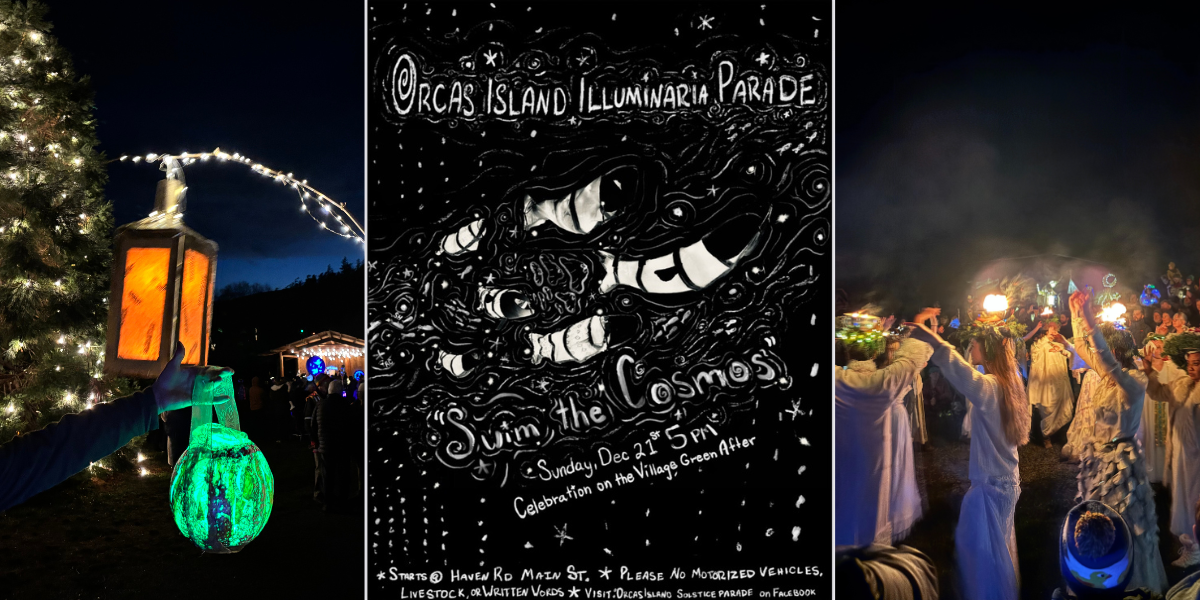— from Leah Whitfield for DOWL —
Overview
The primary goal of the Orcas Island Airport Master Plan has been to address design standard issues and the safety of aircraft and passengers. The Airport is being served by a type of aircraft (more than 500 times per year, which is the number used to determine the most critical aircraft) that the airfield was not built to serve. The Master Plan addressed these design standard compliance issues. Key issues include:
- Runway width
- Runway-to-Taxiway separation
- Runway Protection Zone (RPZ) incompatible uses by roadways
- Object Free Area penetrations
- Part 77 Airspace penetrations
Secondary issues addressed by the Master Plan include:
- Age and condition of the terminal and bi-plane hangar
- Capacity of the cargo facility
- Location of future hangars, as demand requires in the next 20 years
Public Involvement
Engaging the community in the Master Plan was very important to the Port. A public involvement plan was established during scoping and included:
- A project page on the Port’s website.
- A postcard sent to each household on the island at the beginning of the project in the fall of 2017 notifying the public of the project start, a brief overview of what a Master Plan is, the project schedule, including public meetings, and that future communication would be exclusively electronic via an email list.
- A Project Advisory Committee established with members of the Port, FAA, WSDOT, San Juan County, the EPRC, and key tenants on the airfield to provide technical feedback and guidance throughout the project. The Advisory Committee met three times over the course of the project.
- Three public open house events to allow the public to visit with the Project Team and learn about the project (January, June and September 2018).
- A project email list to communicate with interested parties.
- A project email address for communication with the public: orcasmasterplan@dowl.com.
- Press releases and media interviews as needed.
The Master Plan followed that schedule and held all three public meetings. Engagement varied but attendance was generally sparse for the first two meetings and comments were few. The Port held a special meeting in July 2018 to help the public understand the purpose of the Master Plan and the
alternatives.
Master Plan Process
The Master Plan inventoried existing conditions, prepared an aviation demand forecast for the next 20 years, established facility requirements based on FAA standards and forecasted demand, created three alternatives for future development, prepared a preferred alternative, and prepared an airport layout plan (ALP) and implementation plan for the preferred alternative. The FAA reviews all Master Plan documentation but must approve the Aviation Forecast and ALP.
The Airport is a piece of critical transportation infrastructure providing medical evacuation, passenger and cargo service for Island residents and tourists, and improving the economy of the Island. With ferry capacity limited the Airport plays a key role in keeping Orcas Island connected to mainland Washington and beyond. Growth at the airport is primarily due to increases in demand for passenger aircraft and the growing cargo market. Demand for additional based aircraft was determined to be small during the planning horizon.
Alternatives
The Master Plan preferred alternative took into consideration FAA design standards, public comment, environmental impacts, and financial implications. A no-build option was considered, but the financial implications to the Port of repaying past FAA grant funds and the lack of FAA funds for maintenance and rehabilitation going forward were determined to be unacceptable. The financial burden of preserving airport facilities in a safe and functional condition would soon become more than island residents alone could bear.
Meeting FAA design standards was the primary objective of the Master Plan. The Airport is very constrained and has limited land available. The Master Plan Team worked diligently to impact surrounding land owners to the minimal extent possible. When examining land owned by the Port for relocation of the flightline facilities two options were available to the Team: the southeast parcel and the area west of the runway. It was apparent that the residences along Seaview Street would be adversely impacted by passenger traffic. The southeast parcel (formerly used as an off-leash area for dogs) is essentially the only solution for a future terminal and hangar area once the taxiway is relocated to meet separation requirements. The Master Plan Team worked with the advisory committee and local residents to craft a layout that minimally impacted the important intersection of North Beach Road and Mt. Baker Road by placing parking on the eastern portion of the parcel and adding in planned landscaping to enhance the visual aspect of a future terminal area. If the terminal moves forward, the Port can work to ensure that the look and feel of the terminal fits the local landscape and the desires of the community.
The preferred alternative was presented to the public in September 2018. The analysis was completed by December 2018. The project for the last 12 months has been simply composing chapters and awaiting FAA reviews. Recently our discussions with the FAA modified one item in the preferred alternative, due solely to public comment. Mt. Baker Road will not be relocated as a part of this study. It is still an incompatible land use and safety issue within the runway protection zone (RPZ) and will need to be addressed in a future study. There is a misconception that the road was being relocated to extend the runway pavement. The runway pavement is not being extended, it is being reduced by 133 feet. However, existing pavement will be remarked properly resulting in a gain of 354’ of useable runway pavement for takeoff and landing. This does not change the type of aircraft that can utilize the runway. There is no support by the Port or FAA for a runway that is longer than the existing runway pavement. Outside of any development that occurs in the long-term on the west side of the airport there is no expansion planned. The plan relocates existing facilities and capacity t meet design standards set by the FAA. No development will take place prior to environmental studies and permitting.
Project Wrap Up and Next Steps
The FAA is still reviewing the ALP, Alternatives Chapter and Implementation Chapter. These steps are expected to be completed by early 2020. Once complete, DOWL will post a 30-day public comment period regarding the draft report. All comments will be documented. The preferred alternative and implementation of the Master Plan were set in fall of 2018 and are not expected to be changed. DOWL will then publish the final report.
**If you are reading theOrcasonian for free, thank your fellow islanders. If you would like to support theOrcasonian CLICK HERE to set your modestly-priced, voluntary subscription. Otherwise, no worries; we’re happy to share with you.**








Leah, thank you for this overview of the process as well as the scope of the Madter Plan for Orcas’s Airport.
There seems to be some misinformation here: DOWL produced FOUR alternatives in June; or at least DOWL led the Public to believe there were 4 viable alternatives – not 3. In reality, the Public was the last to learn that DOWL only intended to consider the 3 development/expansion alternatives. September’s “Preferred Plan merely took all of those 3, and made them into a “timeline” of not if but WHEN they would happen; many of them were then moved forward in the timeline.
I’m also confused by DOWL’s announcement that moving Mount Baker Road was deleted from the Preferred Alternative, due to the public’s lack of understanding that the runway won’t be lengthened. But we understood. The numbers on the plan drawings all increased the overall length due to the Runway Protection Zone. SO… my question is… if it’s shown on the plan drawings that the OVERALL length increases, does that still set some kind of requirement, in different language, to move Mt. Baker Road?
Although the FAA doesn’t “like” things out of safety compliance, and I think we can all agree that we want safety, the plan to widen the runway separation to 75′ so that planes up to 79′ wingspan can come here, increases safety risks both in the air and on the ground. In a full EIS, this would be addressed. But the FAA will only do an EA.
What happens in a recession? We can’t “unbuild” it. Better to do the minimum required development and take more time to address the complexities and nuances.
“The preferred alternative and implementation of the Master Plan were set in fall of 2018 and are not expected to be changed.” News flash: that was the result of a seriously flawed process and that’s why we replaced the Port commissioners.